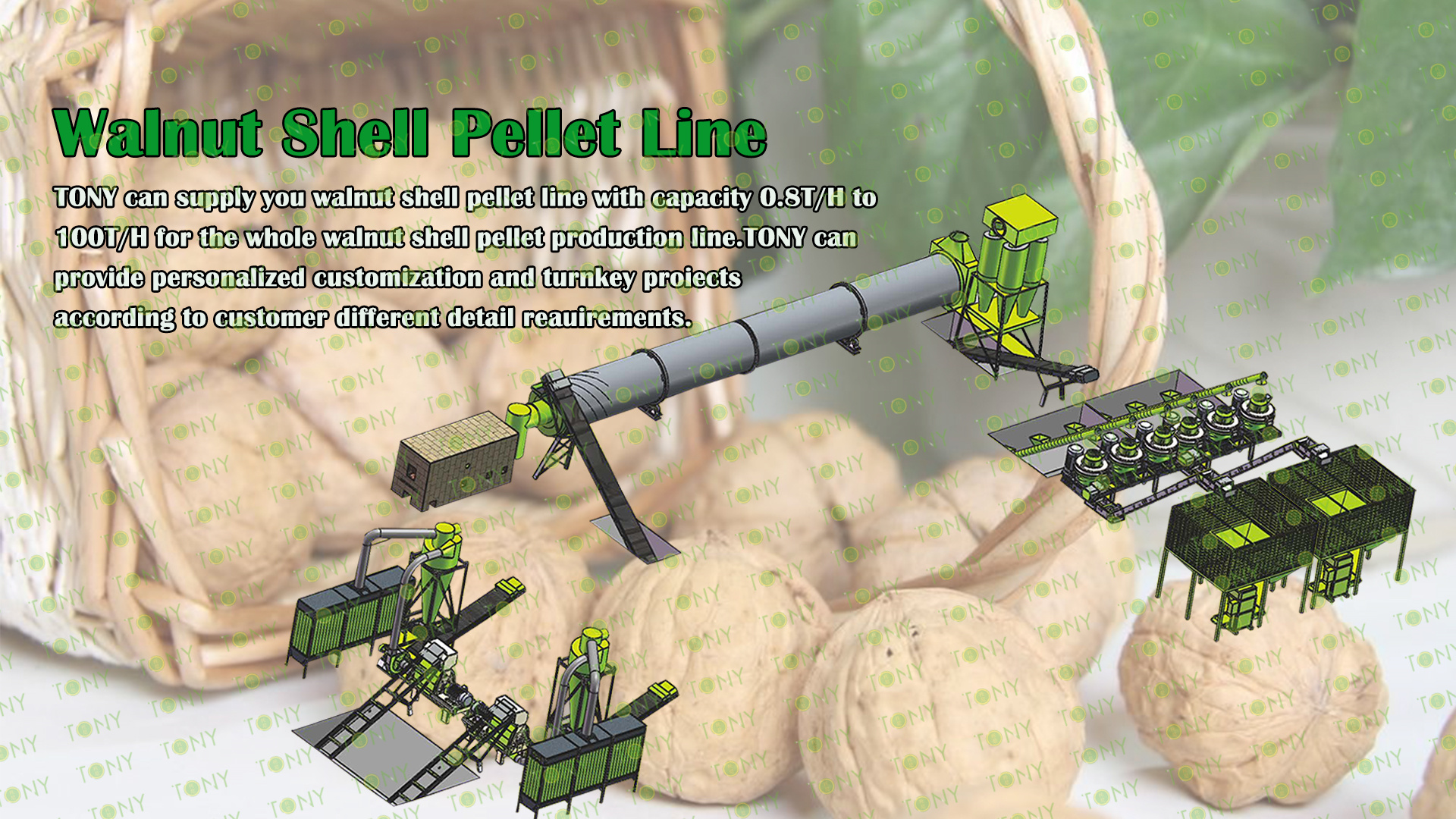
TONY Design 17-18Ton/Hour Walnut Shell Pellet Production Line Specification
The Global Distribution Of Walnut Shells Is Closely Related To The Planting Distribution Of Walnut Trees
1. China
China is the world's largest walnut producer and the country with the highest consumption. Walnut is grown in 22 provinces and cities across the country, of which Yunnan and Xinjiang are the main producing areas.
Yunnan is the world's largest walnut production base, the cultivation history of more than 800 years, the main excellent varieties are Yangbi Dabao walnut, Dayao Santai walnut and so on.
Xinjiang is one of the earliest areas in China to grow walnut, with unique geographical and climatic advantages, the main varieties are Xinfeng, Xinxin No. 2, and the main producing areas are Hotan, Kashgar, Aksu and other places.
2. United States
The United States is the second largest walnut producer in the world and, together with China, dominates the international walnut industry.
3. Turkey, Mexico, Iran, Chile, France
These countries are also important producers of walnut, walnut planting area and production is relatively large.
The global distribution of walnut shells is closely related to the planting distribution of walnut trees. China is the world's largest walnut producer, and the distribution of walnut shells is mainly concentrated in major producing areas such as Yunnan and Xinjiang. The United States, Turkey, Mexico, Iran, Chile, France and other countries are also important walnut producers.
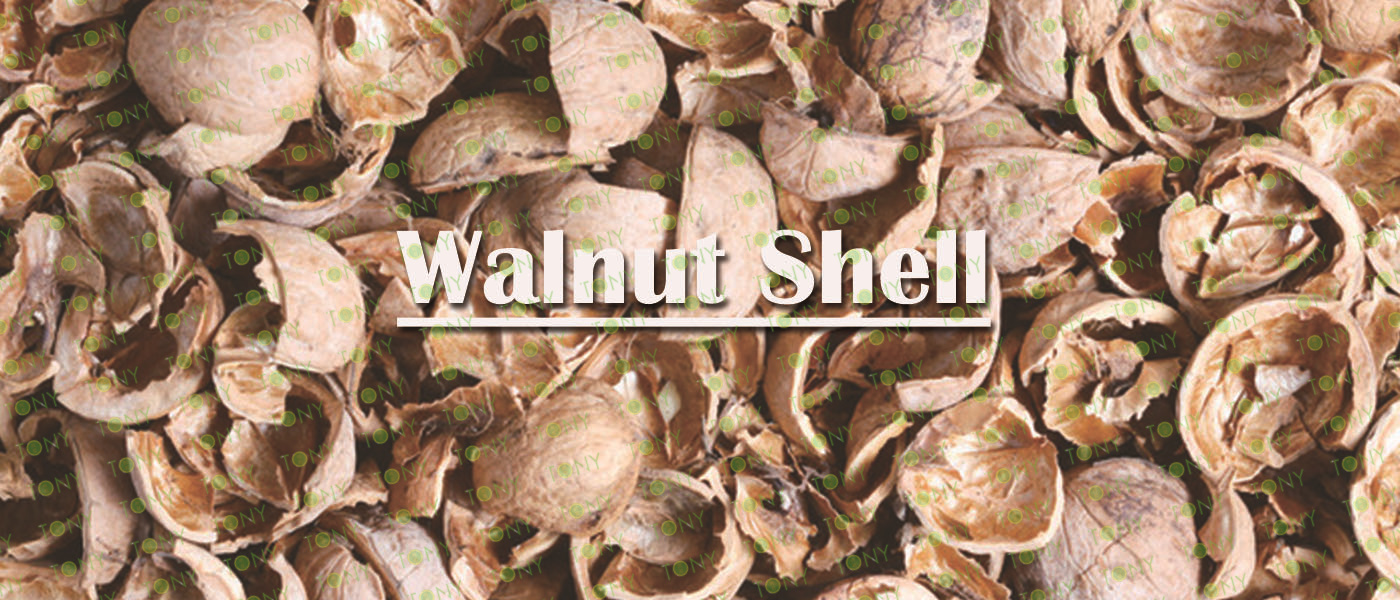
Walnut shell biomass pellet is an environmentally friendly fuel with high calorific value and good combustion performance. The following are its main application areas:
1. Domestic Heating And Domestic Energy
(1) Home Heating: Walnut shell particles can be used as fuel for family fireplaces and heating furnaces to provide a warm and comfortable indoor environment.
(2) Daily Life Energy: Such as cooking, hot water supply, etc., can replace traditional coal and natural gas, more environmentally friendly and economic.
2. Industrial Boiler Fuel
(1) Industrial Steam Boilers: In industrial production, many factories need a large amount of steam, walnut shell particles can be used as the main fuel of industrial steam boilers, replacing traditional coal burning, reducing environmental pollution.
(2) Biomass Industrial Boilers: Boilers specially designed for burning biomass particles can efficiently use walnut shell particles and improve energy efficiency.
Step 3 Generate electricity
(1) Thermal Power Generation: Walnut shell particles can be used as fuel for thermal power plants, replacing part of coal, reducing greenhouse gas emissions and improving energy efficiency.
(2) Distributed Energy: In some areas, small biomass power stations can be established to generate electricity using walnut shell particles to meet local power needs.
4. Agriculture And Horticulture
(1) Soil Conditioner: Burnt walnut shell particle ash can be used as a soil conditioner to increase soil fertility and improve soil structure.
(2) Organic Fertilizer: Processed walnut shell particles can be used as organic fertilizer for the growth of crops to reduce the use of chemical fertilizers.
5. Environmental Protection And Emission Reduction
(1) Reduce Waste: The common walnut shells in rural areas are converted into biomass particles, which not only solves the problem of waste disposal, but also creates economic value.
(2) Reduce Pollution: Compared with traditional fossil fuels, biomass pellet combustion produces fewer pollutants, helping to reduce air pollution and greenhouse gas emissions.
6. Business Value
(1) Broad Market Prospects: With the improvement of environmental awareness and policy support, the market demand for biomass pellet fuel is increasing, and the investment in the production of walnut shell pellets has good commercial prospects.
(2) Large Profit Margin: Due to the relatively low production cost, the profit margin of biomass pellet fuel is large, which has attracted the attention of many investors'conclusion.
Walnut shell biomass pellets, as an environmentally friendly fuel, have wide application prospects. From home heating to industrial production, to power generation and agricultural applications, walnut shell particles can play an important role. At the same time, its production and use can also bring significant environmental benefits and economic benefits.
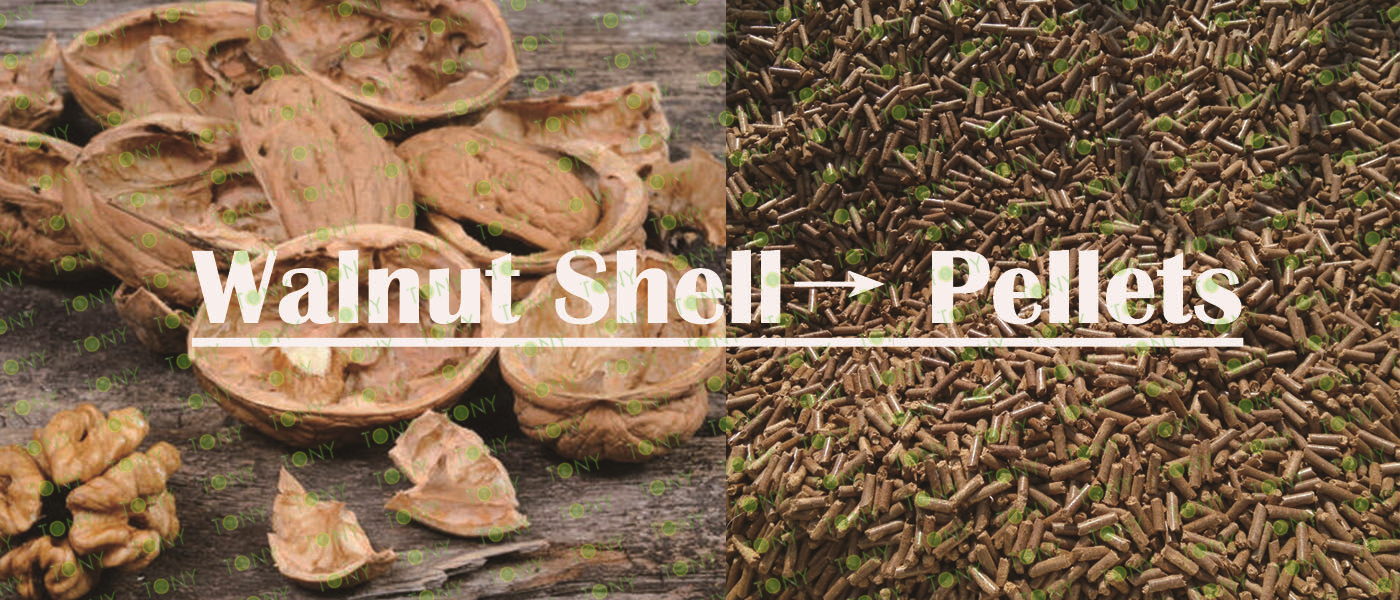

Walnut shell is a kind of biomass resource with high utilization value. In recent years, with the improvement of environmental protection awareness, walnut shell biomass utilization has received more and more attention.Walnut shell has good mechanical properties and chemical stability, can be used to manufacture a variety of products. In addition, walnut shells are also rich in lignin and cellulose, which can be used to produce biomass pellets, which are an environmentally friendly product.
At present, the development prospect of walnut shell biomass utilization is very broad. With the improvement of global environmental awareness, the demand for environmental protection products is increasing, and the utilization of walnut shell biomass will become an important industry. At the same time, the utilization of walnut shell biomass can also promote the development of rural economy and increase farmers' income.
In general, the utilization of walnut shell biomass is a field with broad development prospects. We need to strengthen technology research and development and innovation, reduce costs, and improve product quality to promote the development of walnut shell biomass utilization.
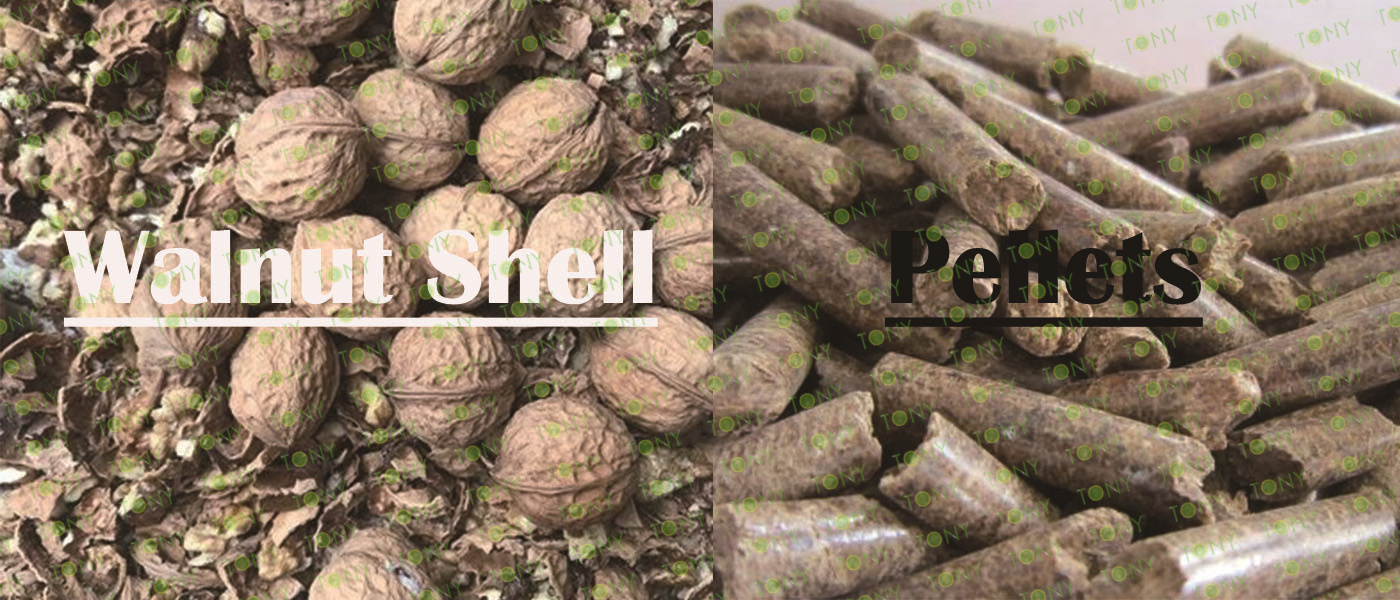
1. Abundant Resources And Low Cost
Walnuts are widely cultivated and consumed in the world, and a large amount of walnut shell waste is generated during the processing of walnuts. If these walnut shells are not used, they will become garbage, increasing the cost of disposal. Making it into pellets can turn waste into treasure and realize effective use of resources. Moreover, as a processing waste, the cost of obtaining walnut shells is extremely low, which provides an economic advantage for pellet production.
2. Suitable Physical Characteristics
Hardness And Toughness: Walnut shell has a certain hardness and toughness, after proper treatment, can withstand the pressure during the processing, is compressed into a stable structure of particles. This characteristic makes the walnut shell particles not easy to break during use and maintain a good particle shape.
Particle Size And Shape: The particle size and shape of the walnut shell itself are more suitable for further processing into particles after pretreatment such as crushing. Its irregular shape can be chimeric with each other during particle molding, helping to form a tight particle structure.
3. High Environmental Value
Renewable: Walnut shell is a natural biomass material with renewable sources. Walnut shell pellets have a lower environmental impact over their entire life cycle than those made from conventional fossil fuels or non-renewable materials. Its use can reduce the dependence on non-renewable resources, in line with the concept of sustainable development.
Low Pollution Emissions: When walnut shell particles are used as fuel, the combustion process is relatively clean. It produces much less emissions of pollutants such as sulfur dioxide and nitrogen oxides than traditional fuels such as coal, helping to reduce air pollution and being more environmentally friendly.

As a new environmental energy, biomass pellets have attracted much attention in domestic and foreign markets in recent years. With the improvement of environmental awareness and the government's increased support for renewable energy, the biomass pellet industry has ushered in unprecedented development opportunities. However, for investors who want to enter the industry, it is crucial to understand the profit profile of the biomass pellet industry. The profit situation of biomass pellet industry is discussed from the aspects of profit source, influencing factors and actual case analysis.
1. Profit Source Of Biomass Pellet Industry
The profits of the biomass pellet industry mainly come from the sales revenue of the products. As a clean energy alternative to traditional coal, the market demand for biomass pellets is growing. In the production process, enterprises can increase sales revenue by improving product quality, reducing costs, expanding market share and other means, so as to achieve profit growth. In addition, the biomass pellet industry can also increase profits through government subsidies, tax incentives and other policy support.
2. Factors Affecting The Profit Of Biomass Pellet Industry
(1) Raw Material Price: The main raw materials of biomass particles are agricultural waste, forestry waste, etc., and the price fluctuations of these raw materials will directly affect the production cost, thus affecting the profits of enterprises.
(2) Market Demand: The market demand for biomass pellets is affected by many factors such as policy, economy and environment. The change of market demand will directly affect the sales price and sales volume of products, thus affecting the profits of enterprises.
(3) Technical Level: The production technology of biomass pellets directly affects the quality and cost of the product. Enterprises with a high level of technology can produce high-quality, low-cost products, so as to obtain higher profits.
(4) Competitive Landscape: The competitive landscape of the biomass pellet industry will also affect the profits of enterprises. In a highly competitive market, enterprises need to compete for market share by improving product quality and reducing costs.
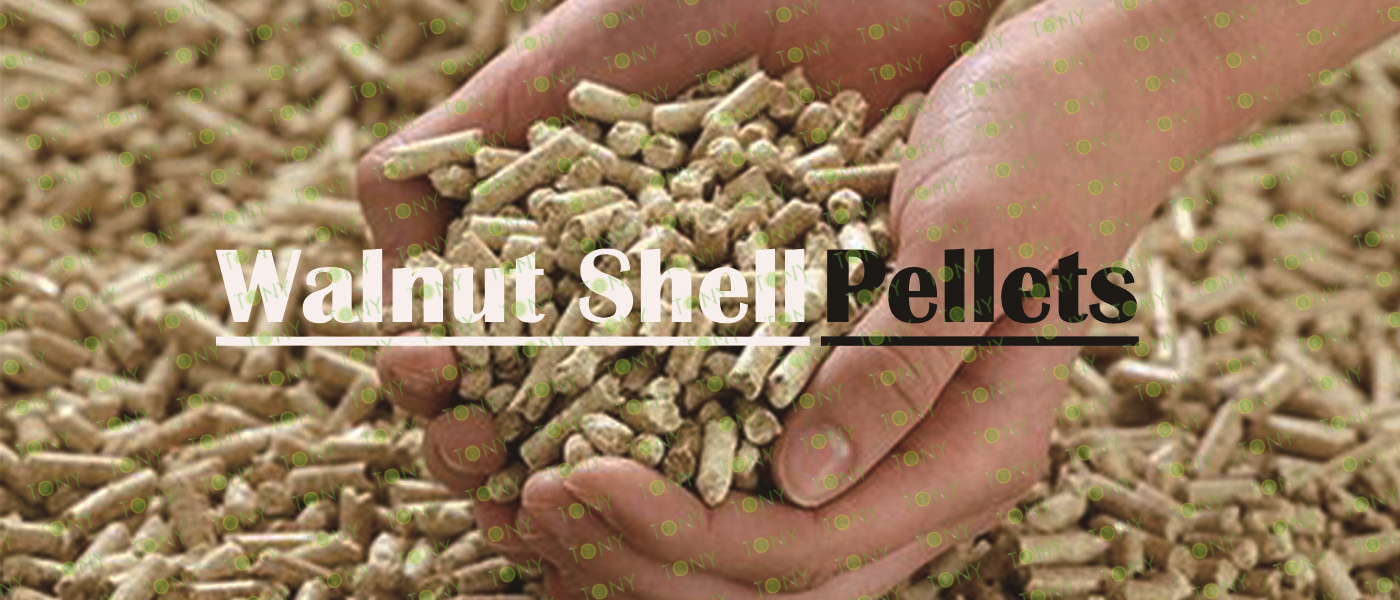

The advantages of biomass particles are as follows:
1. Almost Zero Emissions Compared To Coal
Biomass pellet is a low-carbon and less sulfur environmentally friendly fuel, compared with coal, CO2 emissions are 97.91% less than coal, SO2 emissions are 99.15% less than coal, NO2 emissions are 72.09% less than coal, so relative to the high pollution emissions of coal, biomass pellet fuel emissions are almost zero.
2. Biomass Particles Belong To Environmental Protection And Green Energy
Biomass pellet fuel is recognized as environmental protection "green coal", why is it called green coal, mainly biomass pellet fuel is processed from agricultural and forestry waste, so the green property is obvious. Like straw, sawdust, shavings, scraps, etc., can be processed into pellets.
3. Biomass Particles Are Recycled Renewable Energy
China's agricultural and forestry resources are rich, the utilization rate is less than 10% of the total, and biomass particles can also be processed by peanut shells, straw, rice husks, bark and other raw materials, and the sources are wide.
At present, China's biomass fuel types are relatively complete, coal and gas reserves are limited, there are always exhausted, and biomass fuel will not be exhausted. Therefore, biomass particles turn agricultural and forestry waste into treasure, which not only treats agricultural and forestry waste, but also saves energy, and has the advantage of recycling.
4. Biomass Pellets Have Obvious Cost Advantages Compared With Gas.
Although the price of biomass pellets is slightly higher than that of coal, the overall economy is a relatively low cost energy in addition to coal, the cost of biomass pellets is less than half of natural gas, and electric energy is 3 times that of biomass pellets, so the cost advantage of biomass pellets fuel is obvious.
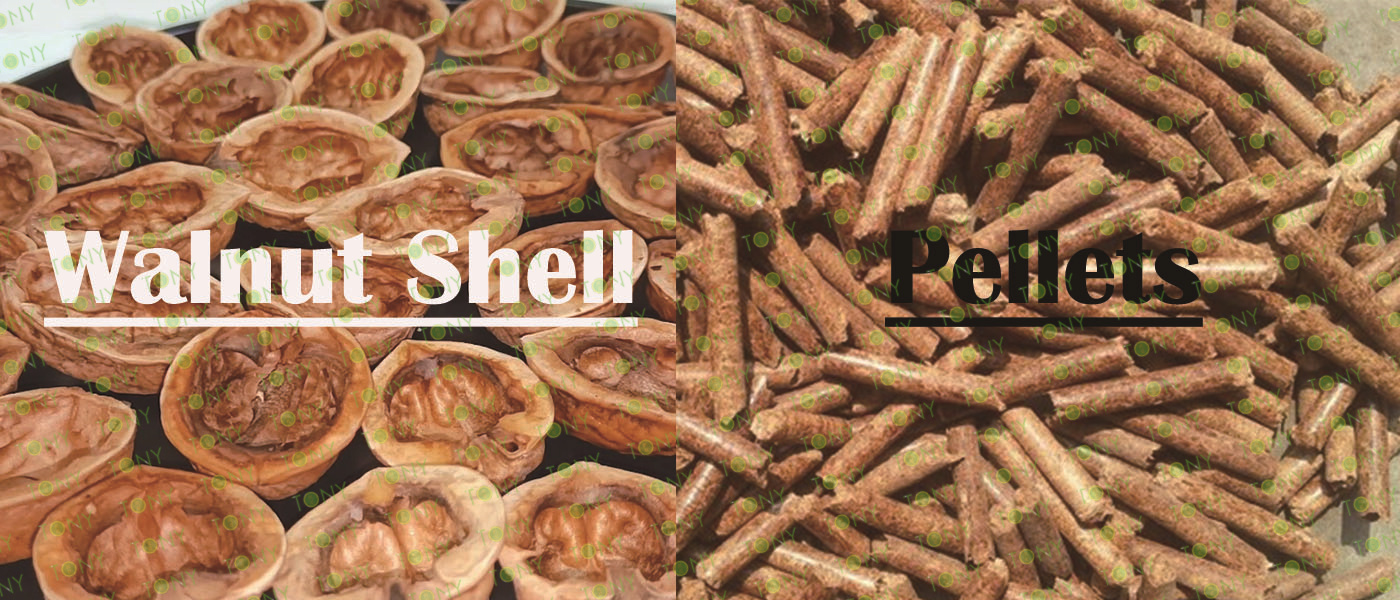

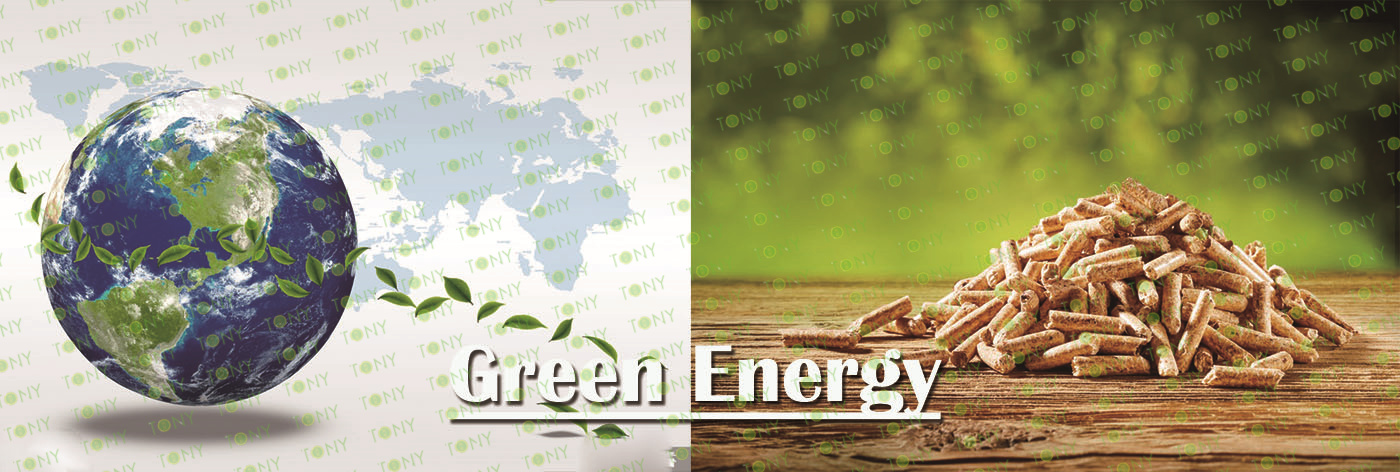
1. Overview Of Market Prospects
Walnut shell pellet fuel has attracted wide attention worldwide because of its low carbon, environmental protection and renewable characteristics. This new fuel not only helps to reduce carbon dioxide emissions, but also improves environmental quality, so it has a wide range of applications in industrial and agricultural fields.
2. Application Field
(1) Industrial Field
Walnut shell pellet fuel has an important application in the industrial field, which can replace the traditional fuel and reduce environmental pollution. It can be used to produce biomass energy, such as biomass diesel and biomass gasoline, to meet energy needs and reduce dependence on traditional energy sources.
(2) Agriculture
In agriculture, the ash of walnut shell pellet fuel can be used to produce biomass fertilizers and biomass pesticides, improve soil quality and control pests and diseases, thereby increasing crop yields.
(3) Market Demand
With the improvement of people's awareness of environmental protection and the improvement of living standards, the demand for biomass pellet fuel will continue to increase. This trend indicates that walnut shell pellet fuel market prospects are very broad.
(4) Policy Support And Technological Progress
Globally, more and more governments are encouraging the use of biomass pellet fuel to reduce dependence on imported oil. At the same time, the continuous advancement of production technology and the reduction of costs will further promote the growth of the market.
To sum up, walnut shell biomass pellet fuel with its environmental protection, renewable and other advantages, in industry, agriculture and other fields has a wide range of application prospects, market demand continues to grow, the future development potential is huge.

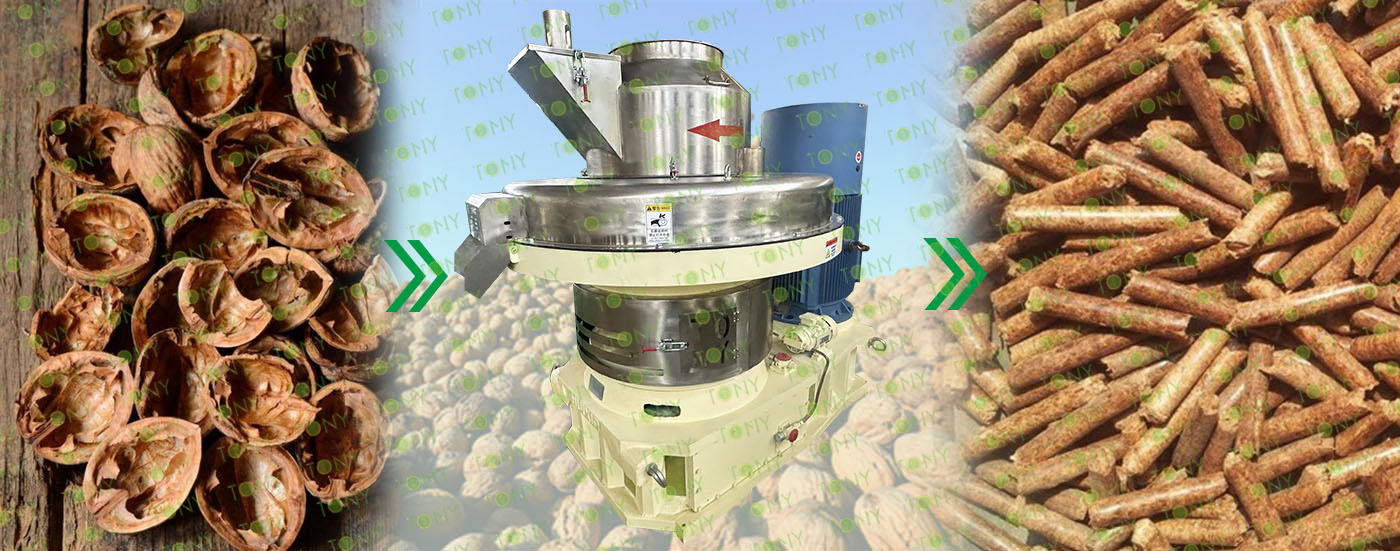
1.The Working Principle Of Walnut Shell Biomass Pellet Processing Equipment
Walnut shell biomass pellet fuel must first be crushed into walnut shell, crushed into sawdust: transported to the drying furnace for drying: dried wood chips into the biomass pellet machine for physical extrusion molding, you can get pellet fuel. The prepared walnut shell particles have a glossy surface and high density, which can be used as a substitute for coal resources. Smokeless and dust-free combustion, high calorific value, full combustion.
2.Characteristics Of Walnut Shell Pellet Processing Equipment
(1) Walnut shell biomass pellet processing equipment has the characteristics of high efficiency and low energy consumption, which can rapidly process biomass raw materials into fuel pellets, improving production efficiency.
(2) Biomass pellet machine has a variety of specifications of the mold, according to different biomass raw materials to choose the corresponding mold for processing, improve the adaptability of processing.
(3) The processing equipment of biomass pellets has the characteristics of high automation and good safety, effectively reducing labor intensity and improving production efficiency.
(4) The quality and specifications of pellet biomass fuel processed by Walnut shell biomass pellet processing equipment are stable and meet the requirements of production standards.
3.Application Scenarios Of Walnut Shell Biomass Pellet Processing Equipment
(1) The Application Of Biomass Particles In Industrial Production
Heat energy utilization: Biomass particles, as a new type of biomass energy, are widely used in industrial production. It can be burned to generate heat for heating, drying and other processes in the production process. Biomass particles have high calorific value, high combustion efficiency, and do not produce harmful gases such as carbon dioxide, which is pollution-free to the environment.
Power utilization: Biomass pellets can also be used as a fuel for power generation. In Europe and other places, biomass pellets have become an important renewable energy and are widely used in the power industry. The power generation efficiency of biomass pellets is high, and it can also reduce the use of fossil fuels, which has a positive effect on environmental protection.
(2) The Application Of Biomass Particles In Family Life
Heating: Biomass pellets can be used to heat homes. It can be put into fireplaces, gas stoves and other devices to generate heat for heating. Compared with the traditional coal-burning heating method, the biomass pellet heating method is more environmentally friendly and energy-saving.
Cooking: Biomass pellets can also be used for cooking. For example, adding biomass particles to a gas stove can be used for cooking, soup and other cooking processes. Biomass particles have high calorific value, high combustion efficiency, and will not produce harmful gases, which is harmless to health.
Hot water supply: Biomass pellets can also be used for hot water supply. For example, adding biomass particles to a solar water heater can increase the temperature of hot water. Compared with the traditional coal-burning heating method, the biomass pellet heating method is more environmentally friendly and energy-saving.
(3) The Application Of Biomass Particles In Environmental Protection
Reduce greenhouse gas emissions: The combustion process of biomass particles does not produce harmful gases such as carbon dioxide, which can effectively reduce greenhouse gas emissions and have a positive effect on environmental protection.
Reduce the use of fossil fuels: Biomass pellets, as a renewable energy source, can effectively reduce the use of fossil fuels, thereby reducing environmental pollution and promoting circular economy: biomass pellets can be used to manufacture biomass fertilizers, animal feed and other products, thereby promoting the development of circular economy and reducing resource waste.
In short, biomass particles as a new type of biomass energy, its application range is very wide, not only can be used in industrial production, family life, agricultural production and other aspects, but also can have a positive role in environmental protection. With the continuous enhancement of people's awareness of environmental protection, it is believed that the application prospect of biomass particles will be more and more broad.

1.Project Name: Walnut Shell Pellet Line
2.Raw Materisl: Walnut Shell
3.Moisture Of Raw Material: Wet Type 40-55%
4.Capacity: 17-19Ton/Hour
5.Process: Fine Crushing Process→Drying Process→Pelleting Process→Cooling Process→Packing Process
6.Main Machine: Hammer Mill,Rotary Drum Dryer,TONY Pellet MachineTYJ760-Ⅲ-185KW,Pellets Cooler,Packing Machine And Belt ConveyorsPacking Machine And Belt Conveyors
7.Total Power: About 1950KW
8.Need Area: About 1600-1800㎡
9.Project Country: Mexico
10.Voltage: 440V,60HZ

TONY Brand17-18Ton/Hour Walnut Shell pellet manufacturing plant can be walnut shell ,various crop shell, such ashazelnut husk, peanut shell, rice shell, walnut core, melon seed shell, etc., with walnut shell as raw materials, after pretreatment and processing solidified into high-density pellet fuel, which is an ideal fuel to replace coal and oil, and has the role of energy saving and emission reduction. At present, it has been widely used in countries with various husk materials.
1.Capacity: 17-18 Ton/Hour
2.Raw Materials: Walnut Shell, hazelnut husk, peanut shell, rice shell,etc.
3.Moisture: Wet type, about 40-55%.
4.Application: All kinds of husk.
5.Suitable Customers: Green energy companies, large farms, private growers and other customers with advantages in raw materials.
6.Finished Pellets Markets: Large power plants (domestic customers, as well as Japan and South Korea, mainly South Korea more), domestic heating, industrial heating, combustion heat, heating heating, boiler room, school canteen, foundry heat source.


|
Project Brief Introduction: 1.Product: Walnut Shell Pellet Line. 2.Capacity: 17-18T/Hour 3.TONY Brand 17-18Ton/Hour Walnut Shell Pellet Line Project Process 4.Main Machine: Hammer Mill,Rotary Drum Dryer,TONY Pellet MachineTYJ760-Ⅲ-185KW,Pellets Cooler,Packing Machine And Belt Conveyors. 5.Total Power: About 1950KW 6.Need Area: About 1600-1800㎡ 7.Country: Mexico |
Project Layout For Customer |
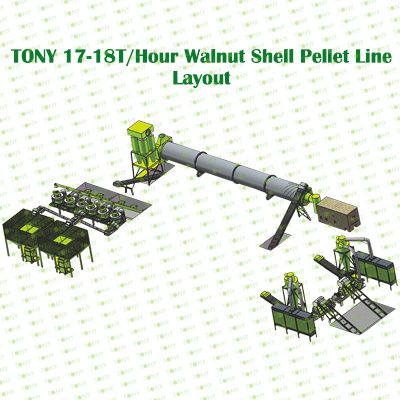 |


|
How to use TONY pellet line to proceed from walnut shell into pellets? It mainly contains the following steps and machines as following: 1.To Use TONY Hammer Mill To Crush Walnut Shell Into 8-14mmWet Walnut Shell Dust. 2.To Use TONY Rotary Drum Dryer To Dry The 40-55% Wet Walnut Shell Dust Into 10-15% Walnut Shell Dust 3.To Use TONY Vertical Ring Die Pellet Machine To Products Pellets With φ6-8mm. 4.To Use TONY Simple Cooling Bin To Cool & Store Walnut Shell Pellets 5.To Use TONY Semi-Auto Packing Machine To Packing Pellets To 15-50Kg/Bags. You Can Contact TONY To Get For More Details Information And Quotation. TONY Can Supply You All The Products As Above With Competitive Price And Excellent Quality. |
|
|||||||||||||||||||||||||||||||||||||||||||||
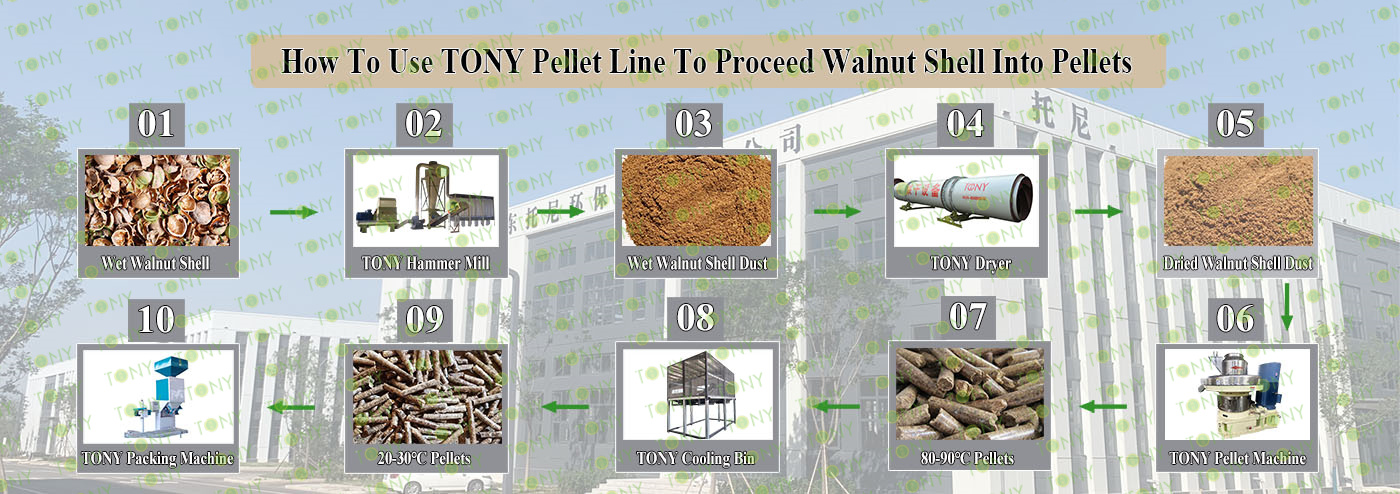



Following TONY Will Introduce For You For All The Necessary Machinery That Will Be Used For The Whole Pellet Production Line. Some machines can be custom made by customer according to different customer's detailed demand.Contact TONY for more details with quotation and layout.
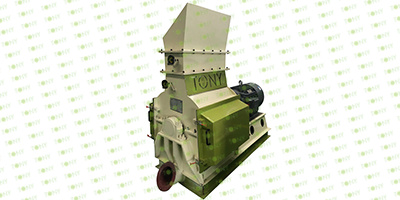 |
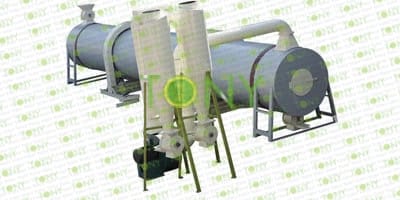 |
 |
| High Efficient Hammer Mill | Rotary Drum Dryer | Vertical Ring Die Pellet Machine |
|
1.Crush Walnut Shell Into 8-14mm Wet Walnut Shell Dust. 2.Model: TFD75-200*2sets 3.Capacity:8.5-9Ton/Hour/Set |
1.To Dry The 40-55% Wet Walnut Shell Dust Into 10-15% Walnut Shell Dust. 2.Model: THGD3.5*28 3.Capacity: 17-18Ton/Hour |
1.Model: TYJ760-Ⅲ-185KW*6 sets 2.Capacity: 2.8-3.3Ton/Hour/Set 3.New 304SS Type |
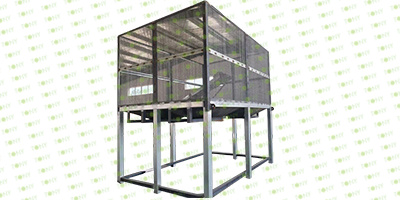 |
 |
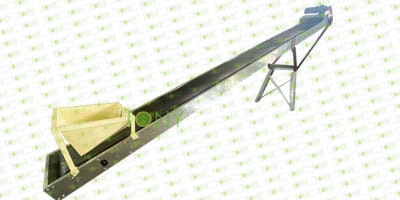 |
| Cooling Bin | Semi- Auto Packing Machine | Belt Conveyor |
|
1.To Cool &Store The Walnut Shell Pellets 2.Model: TJLN-150*2sets 3.Capacity: 150m³/set |
1.Packing Pellets To 15-50KG/Bags. 2.Model: TBF-50*2sets 3.Capacity: 17-18Ton/Hour |
1.Transport Walnut Shell,Walnut Shell Dust,Pellets. 2.Width: 60cm *16 sets 3.Capacity: Designed With The Whole Line |

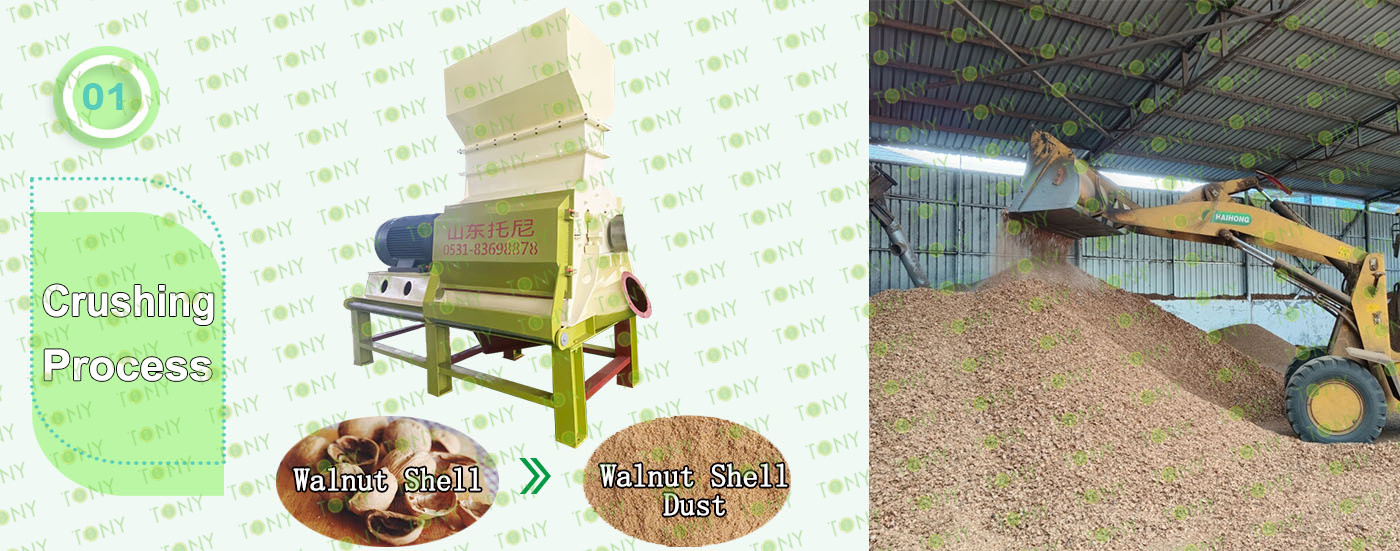
|
1.Fine Crushing Process: A. The process is mainly used to crush Walnut Shell into 8-14mm Walnut Shell Dust. B.Capacity: 8.5-9 tons/hour/set. C.TONY uses high efficiency hammer mill TFD75-200KW-2Sets. Main parts: (1)TONY high efficiency hammer mill. (2) 90 hole galvanized dust collector. (3)Sawdust conveying fan. (4)Cyclone with airlock. (5)Electrical cabinet. |
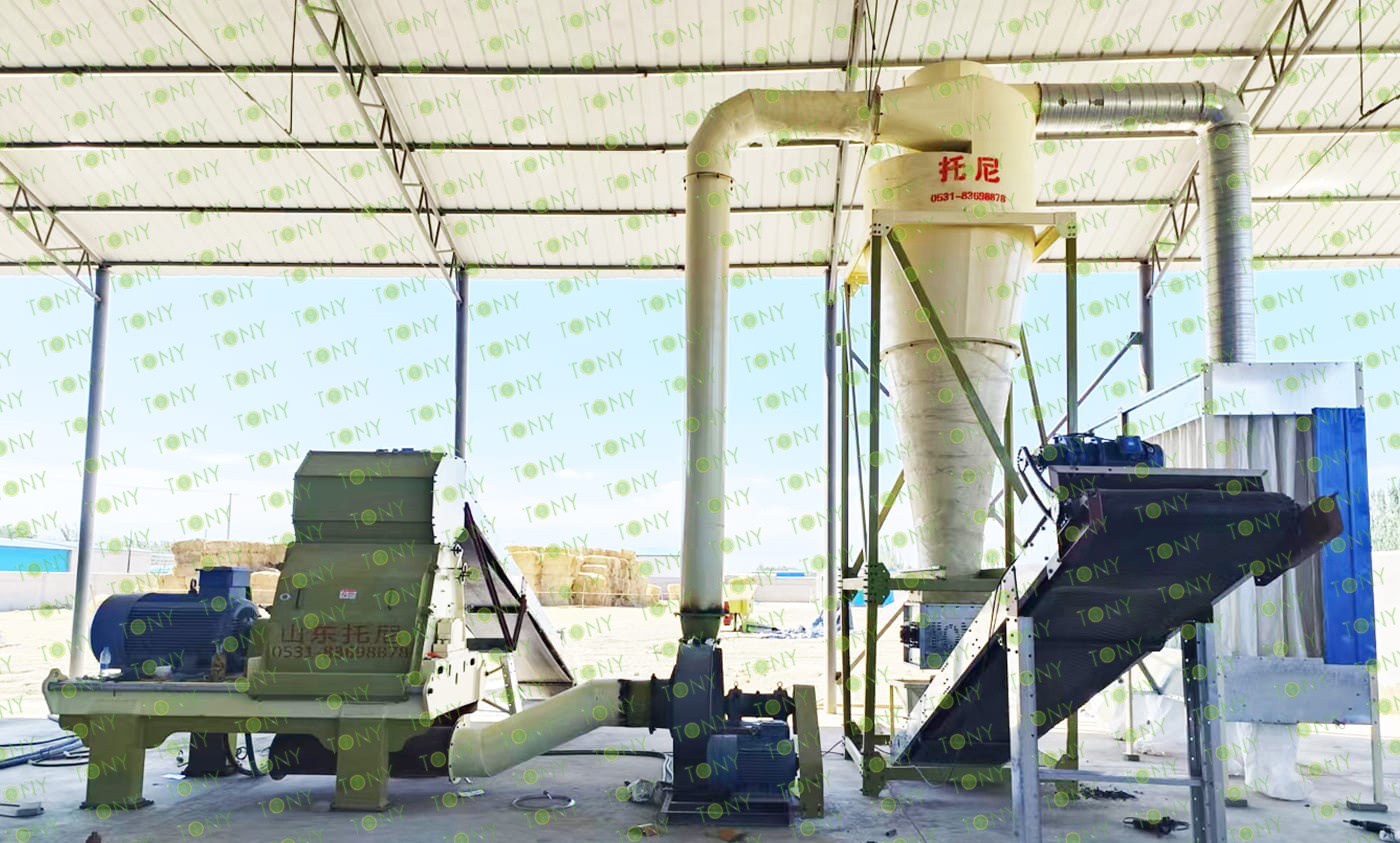

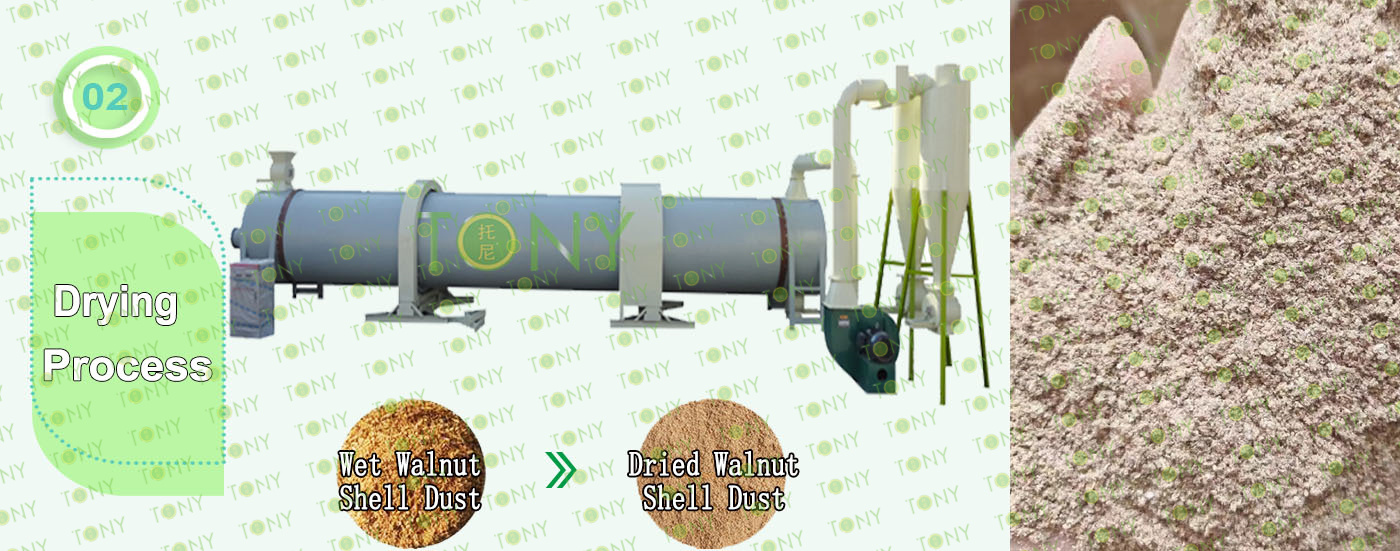
|
2.Wet Walnut Shell Dust Drying Process: A.This process is mainly used to dry wet walnut shell Dust from 40%-55% to 10-15%. B.Capacity:17-18Ton/Hour. C.TONY use 1set of 3.5*28m single layer rotary drum dryer for this process,this customer use biomass waste wood as buring raw material with hot stove 8*3*3m. TONY hot blast stove is made of firebrick pan, shell with H steel plate as the frame. There are 3 layers of fire blocking device inside, which can effectively prevent the fire from entering the tumble dryer. TONY dryer use spiral tube material, which has higher heart rate and is not easy to deform. Unlike other manufacturers with iron plate splicing welding, very easy to deformation. Main Parts: (1)TONY's Rotary Drum Dryer Main Body(Reducers With Motors and Pips). (2)TONY's Wood Waste Hot Stove. (3)Fan Blower+Cyclone With Airlock. |
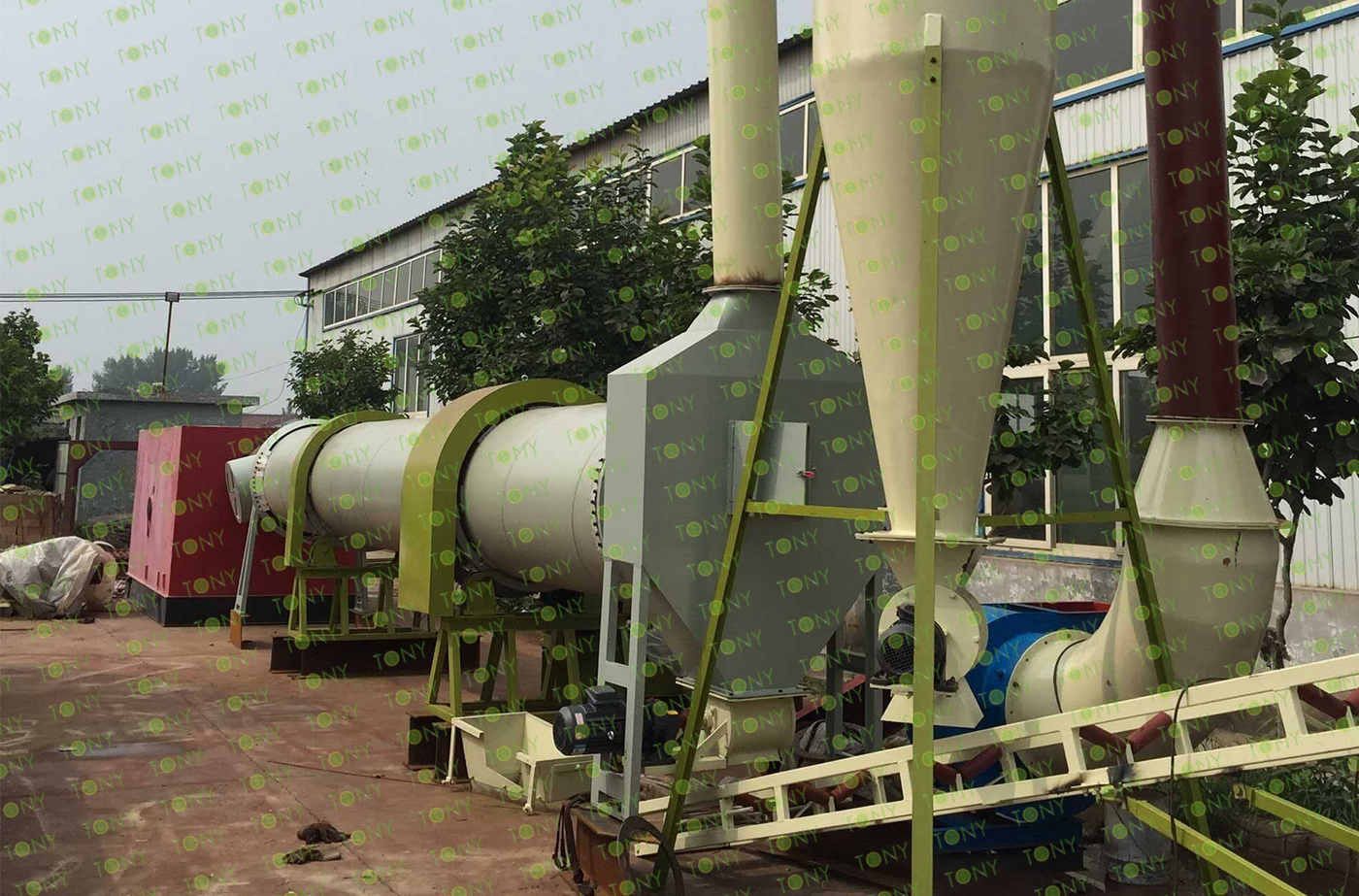

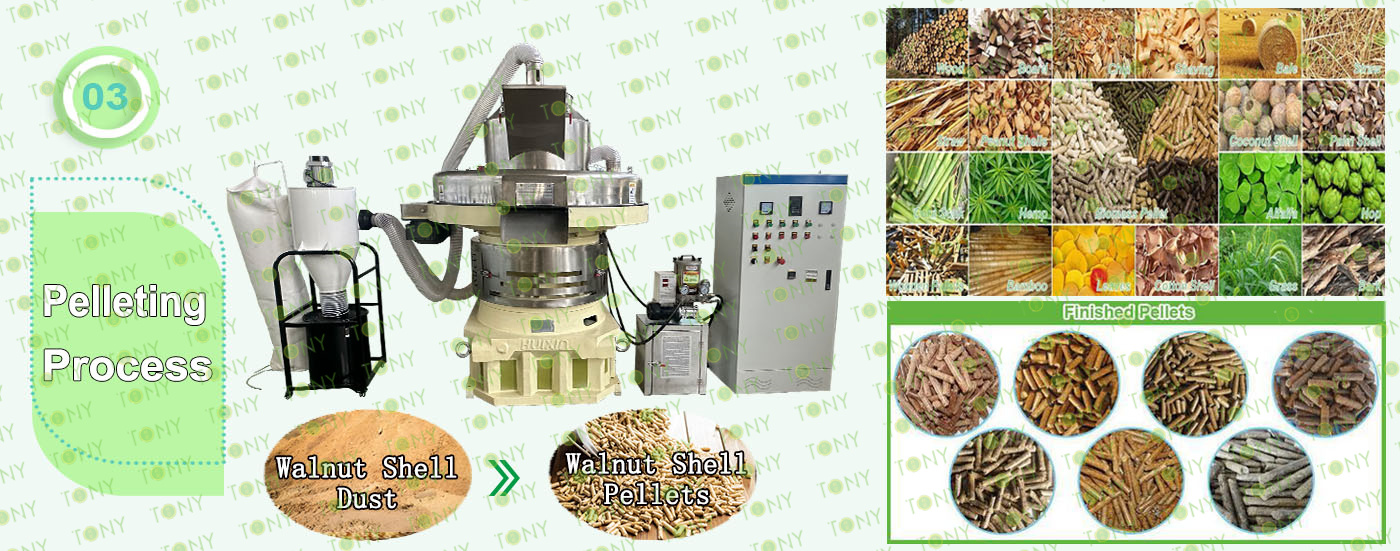
|
3.Pelleting Process: A.This process is mainly used to product pellets with φ6-8mm. Biggest Capacity: 2.8-3.3 Ton/Hour/Set. C.The customer chooses 6 sets of TONY Brand Vertical Ring Die Pellet Machine TYJ760-III-185KWTotal Capacity 17-18 Ton/Hour. Main Parts: (1)TONY's new Vertical Ring Die Pellet Machine. (2)Cyclone And Bags Dust Collectors. (3)Bearings Automatic Lubrication System. (4)Electrical Cabinets. You can choose TONY new type SS304 pellet machine or old type MS pellet machine. |
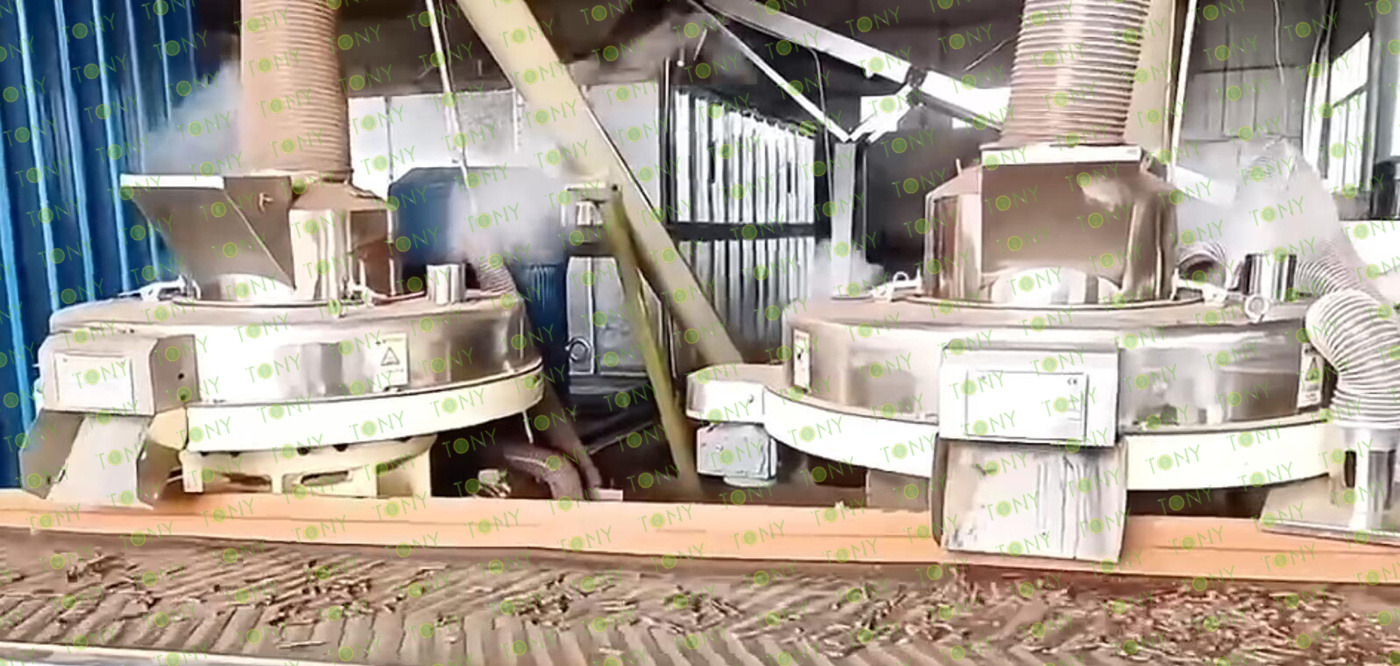

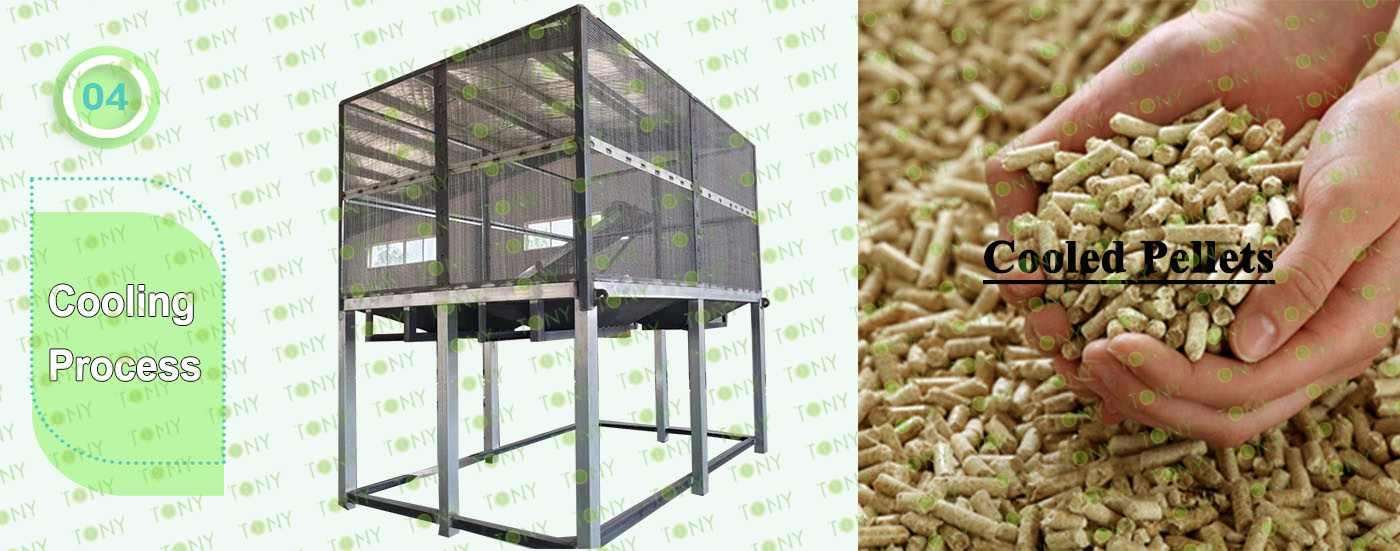
4.Cooling Process:
A.This process is mainly used to cool and store the pellets .
B.The customer choose 2 sets of TONY Cooling Bin with capacity 150m³/set.
Main Parts:
(1)TONY's New Cooling Bin.
(2)With pellets discharge port
(3)Customers can also choose to make their own processing.
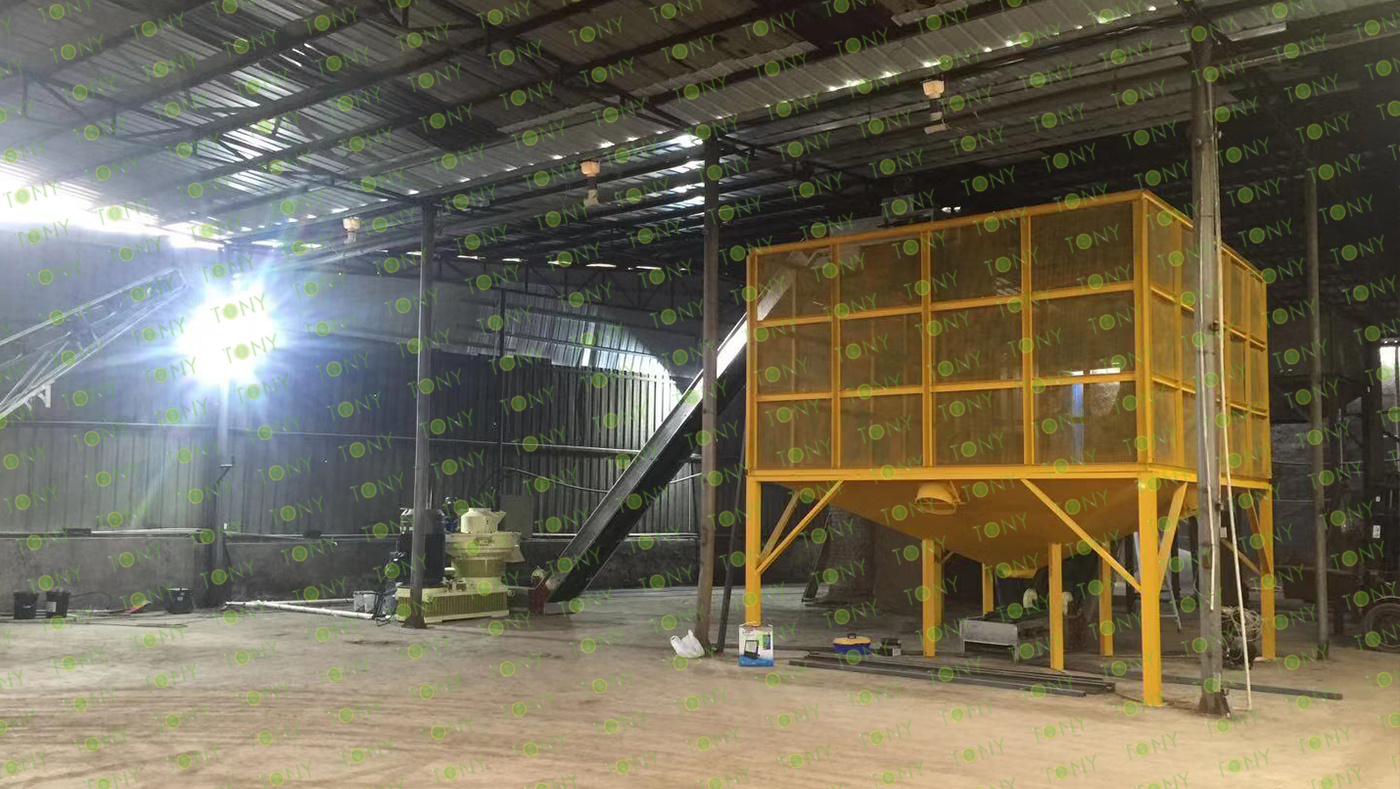

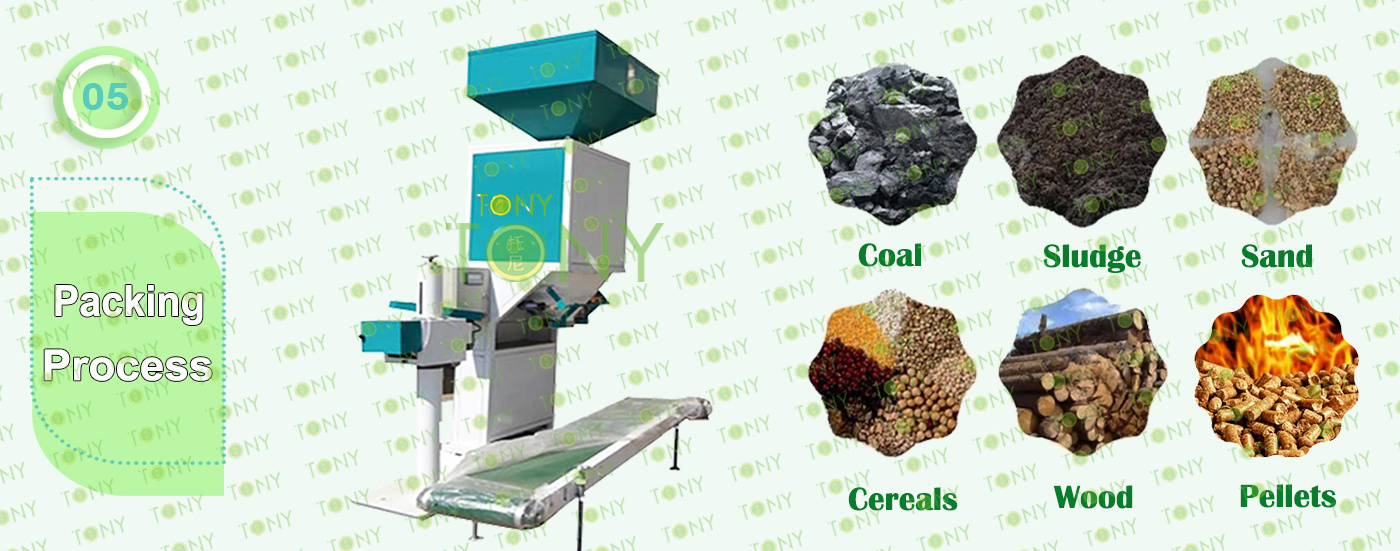
5.Packing Process:
A.This process is mainly used to pack pellets to 15-50KG/Bags
B.The customer chose 2 sets of TONY Semi-Automatic Packing Machine
Main Parts:
(1)TONY's new TONY Semi-Automatic Packing Machine.
(2)Sew Machine,Buyer Can Also Chose Hot Seal Machine For Chosen,To Confirm With TONY For The Price Difference.
(3)Bags Transportation Conveyors.
(4)Feeding Inlet Silo
(5)Electrical Cabinets.
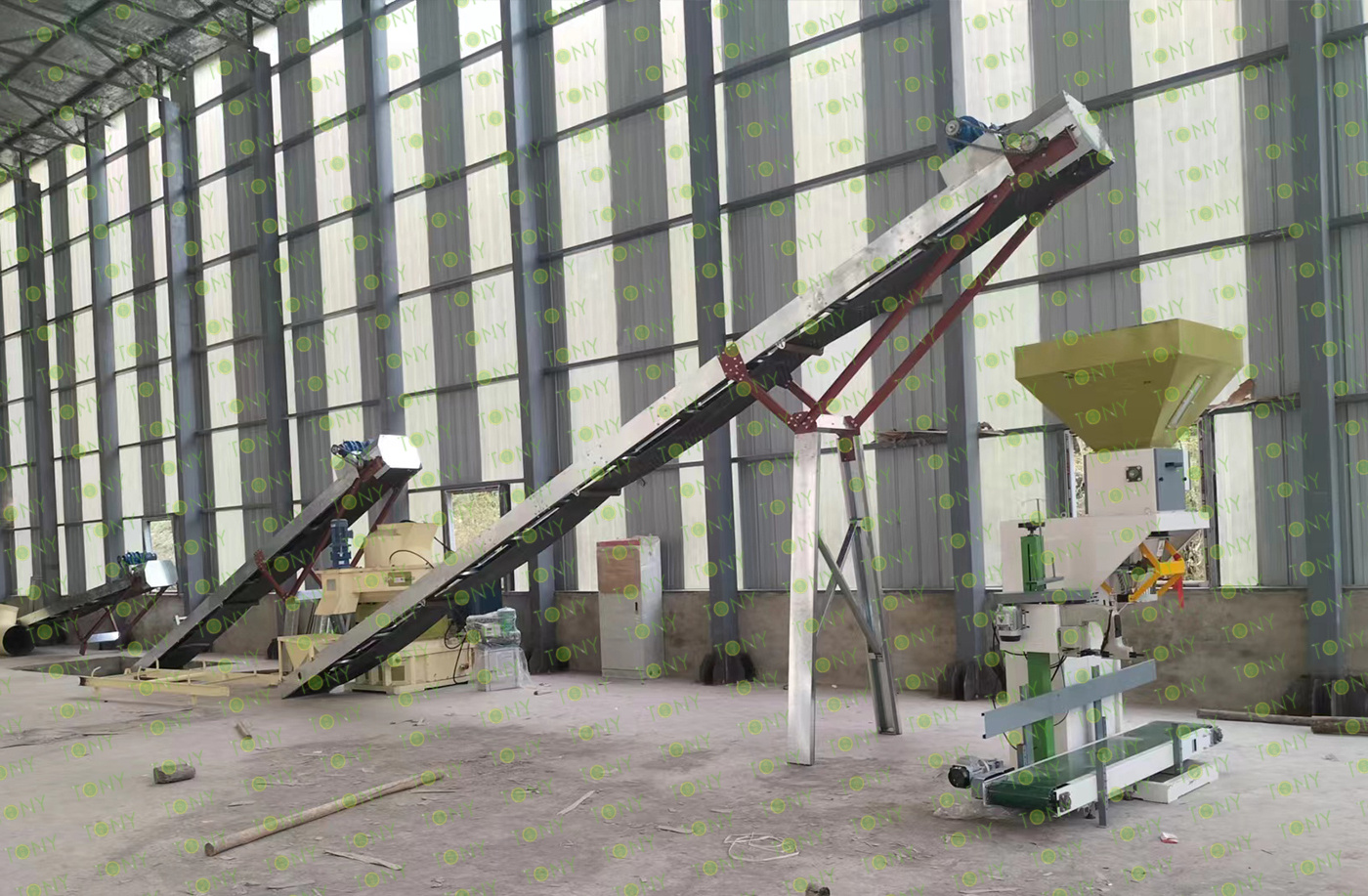

TONY Detailed Design 3D Layout With Detailed Size For 5-6Ton/Hour Walnut Shell Pellet Line According To Cusomer Factor Size
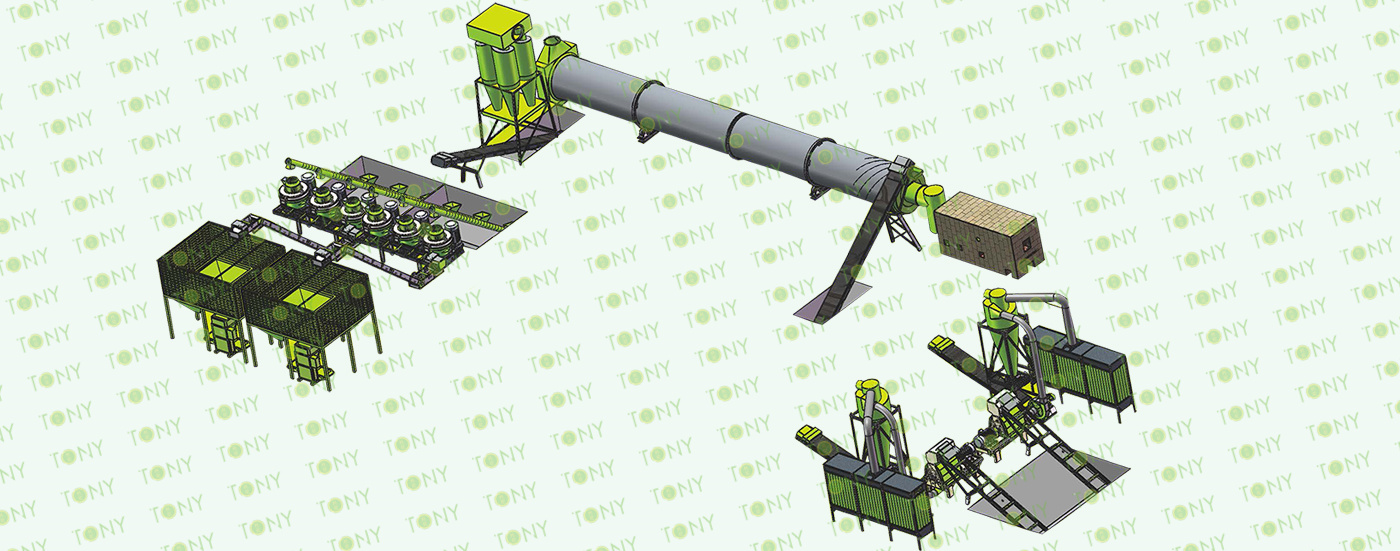

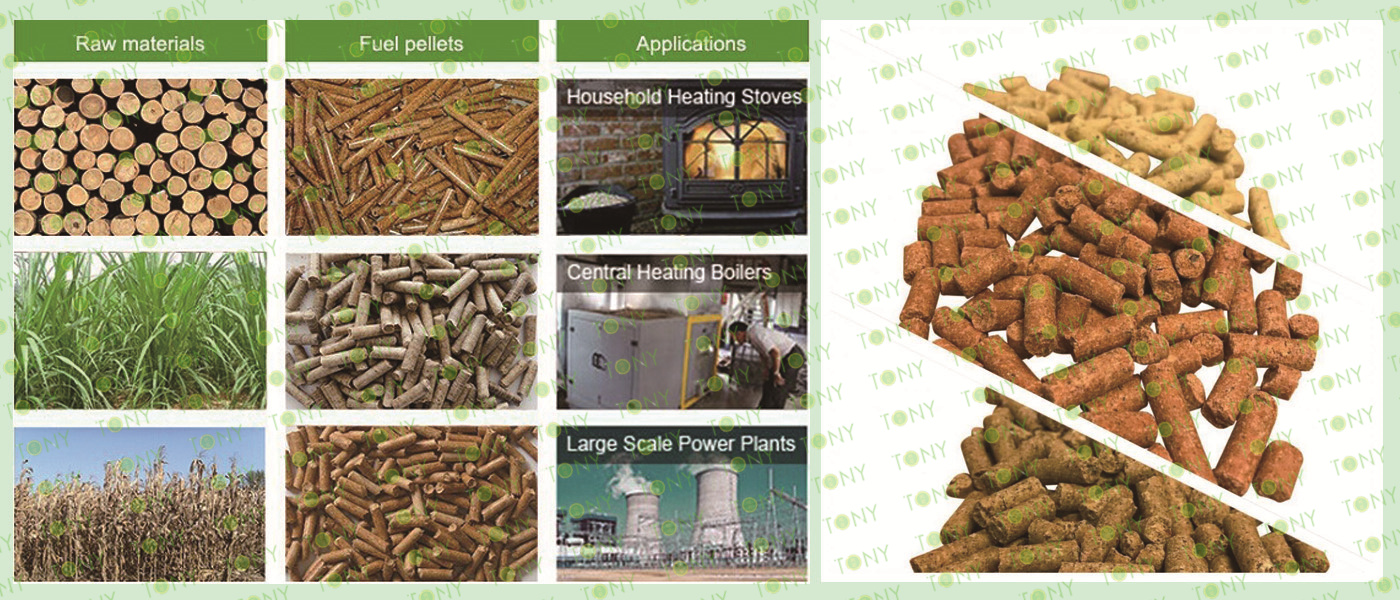
The cost of biomass pellet production mainly includes raw material cost, equipment investment, energy consumption and labor cost in the production process. However, with advances in technology and economies of scale, these costs can be effectively controlled. At the same time, the market price of biomass pellets is relatively high, making the production more profitable.
Suggestions to improve the profit of biomass pellet production:
1. Expand Raw Material Sources:
Reduce raw material costs by expanding raw material sources. You can consider using a variety of resources to realize the recycling of resources.
2. Optimize The Production Process:
Reduce energy consumption and labor costs by optimizing production processes. For example, reasonable arrangement of equipment use and maintenance plans to improve the efficiency of equipment use; Optimize employee training programs to improve employee skills and efficiency.
3. Improve Product Quality:
Enhance market competitiveness by improving product quality. Quality control can be strengthened to ensure that products meet relevant standards and customer requirements; At the same time, strengthen product research and development and innovation, and launch more competitive new products.
In summary, biomass pellet production is lucrative, but there are also certain challenges. By optimizing the production process, reducing costs, improving product quality and other measures, the profit level of biomass pellet production can be further improved and sustainable development can be achieved.

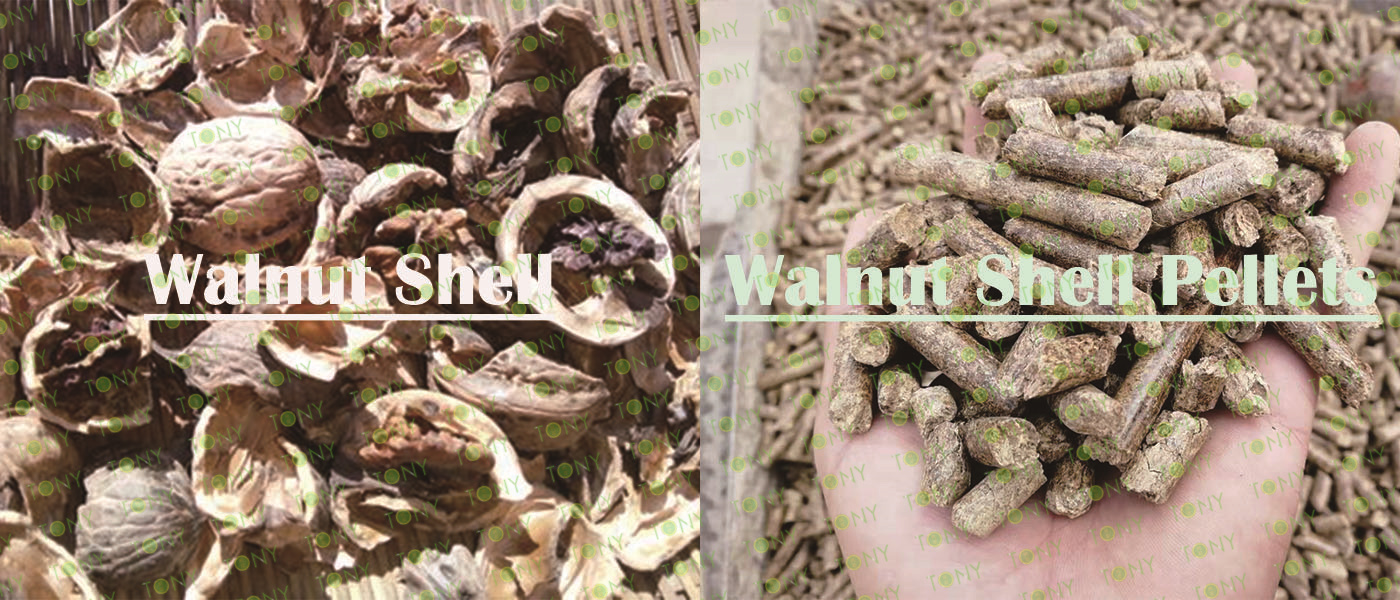
1. Development Status Of Walnut Shell Biomass Pellets
At present, the production technology of walnut shell biomass particles has been relatively mature, and the production scale has been expanding. In the domestic and foreign markets, the demand for biomass pellets has shown a steady growth trend. Especially in some developed countries, biomass pellets have become an important alternative to traditional fossil energy. At the same time, the production cost of walnut shell biomass pellets is also gradually reducing, providing strong support for its popularity in the market.
2. Market Prospects Of Walnut Shell Biomass Pellets
With the transformation of the global energy structure and the improvement of environmental protection awareness, the market prospect of walnut shell biomass particles is very broad. First of all, biomass particles as a clean energy, in line with the requirements of sustainable development, will occupy an important position in the future energy field. Secondly, the raw materials for the production of walnut shell biomass pellets are widely available and have great potential for development. Finally, the application field of biomass particles will continue to expand, not only can be used in industrial boilers, civil heating and other fields, but also can be applied to biomass power generation, biomass gas and other fields, providing a broad market space for the further development of biomass pellets.
To sum up, walnut shell biomass pellets, as a renewable energy source, have broad prospects for development. With the transformation of the global energy structure and the improvement of environmental awareness, walnut shell biomass particles will occupy an important position in the future energy field. At the same time, the production cost of walnut shell biomass particles continues to decrease, and the application field will continue to expand, providing strong support for its popularity in the market. Therefore, we can predict that walnut shell biomass particles will become an important force in the future energy field and make important contributions to the sustainable development of human society.

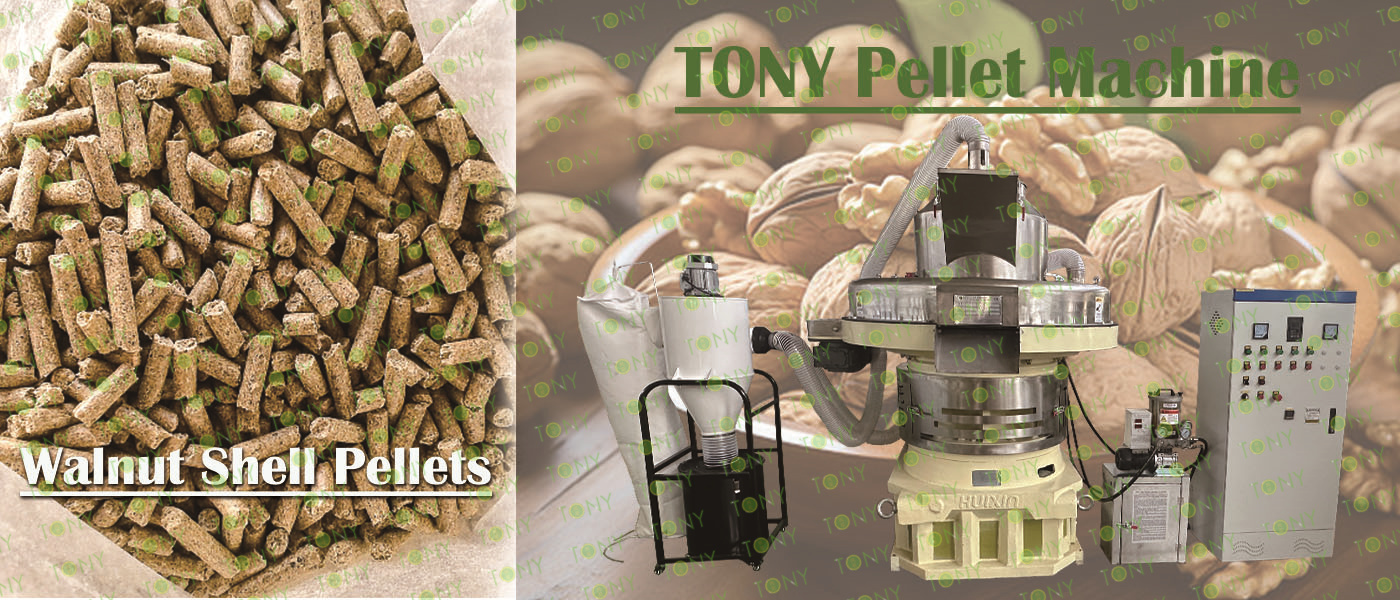
The key factors affecting the production of biomass pellets:
1. Raw Material Cost:
The main raw materials of biomass particles include agricultural and forestry wastes. The acquisition cost of raw materials directly affects the production cost of biomass pellets. Therefore, selecting the right source of raw materials and optimizing the purchasing strategy of raw materials are important ways to reduce production costs and increase profits. For example, the production of biomass particles for walnut shells as raw materials is to reduce the cost of raw materials, because the amount of walnut kernel resources is huge, and the acquisition cost is low.
2. Equipment Investment:
Biomass pellet production process needs to use crushing, drying, granulation and other equipment. The quality and performance of the equipment directly affect the production efficiency and product quality. Therefore, in terms of equipment investment, equipment with stable performance and advanced technology should be selected to improve production efficiency and product quality, and thus improve profits. TONY has more than 20 years of experience in the pellet production line industry, serving numerous customers with reliable equipment quality.
3. Production Process:
The production process of walnut shell biomass particles includes crushing, drying, granulation, packaging and other links. These links need reasonable arrangement and fine management to reduce costs and improve production efficiency. At the same time, quality control in the production process is also crucial, high-quality products can enhance market competitiveness, and then improve profits.

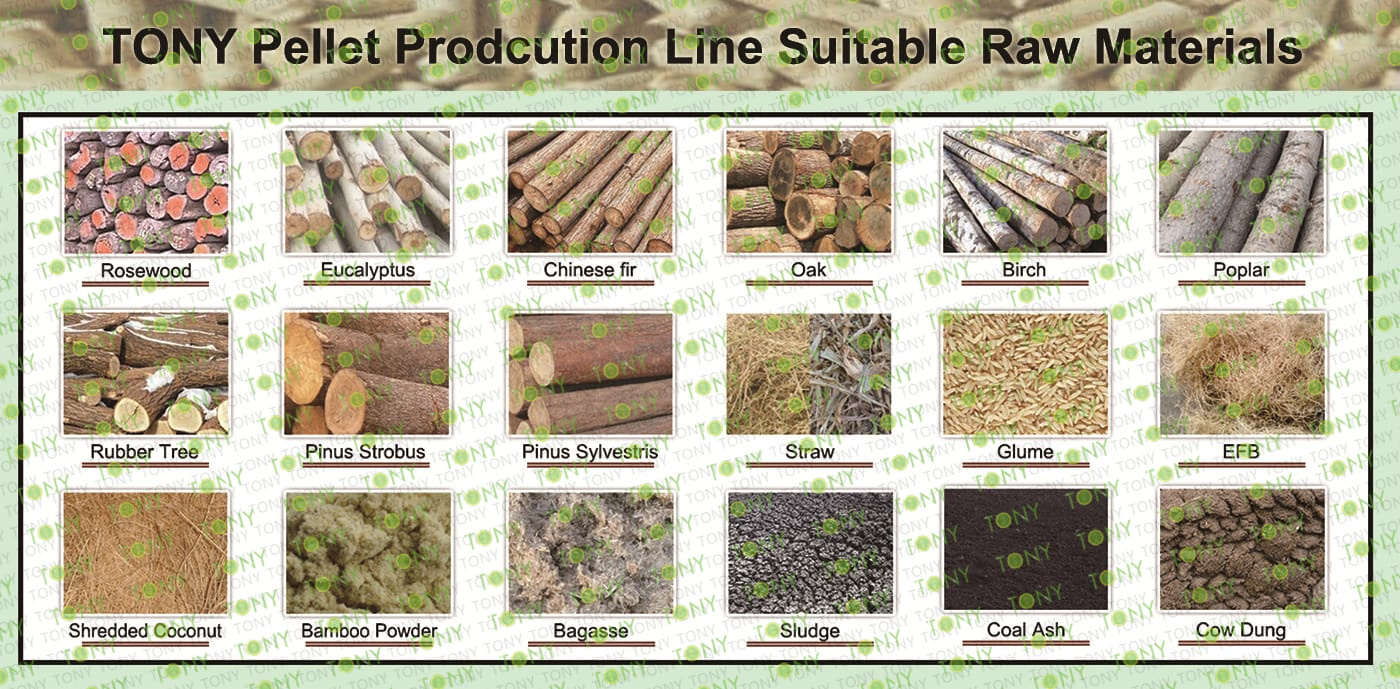




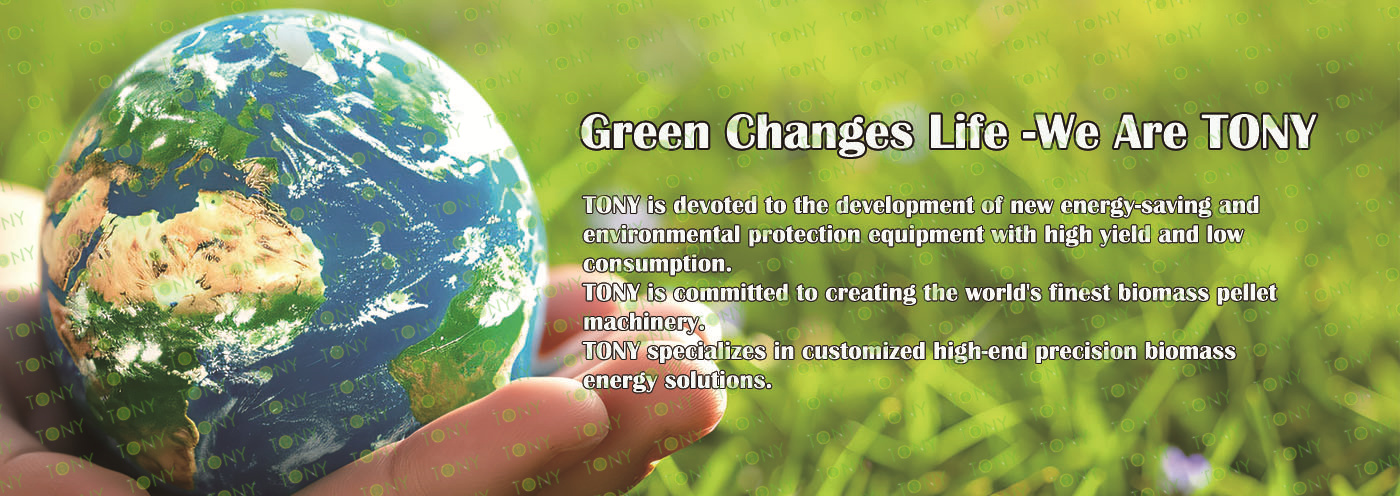
2024 Tony Machinery - All Rights Reserved. Map